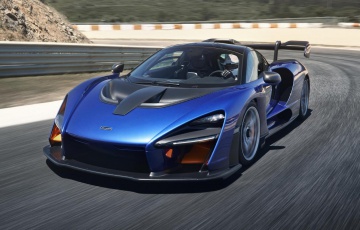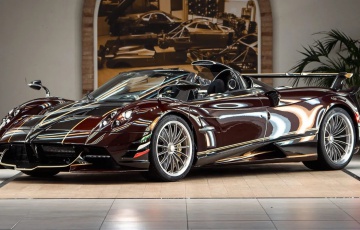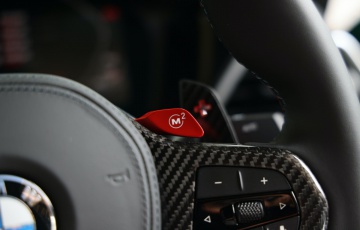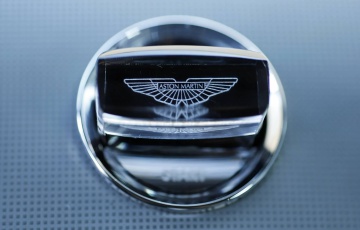Driven: The 700+hp Pagani Zonda LM
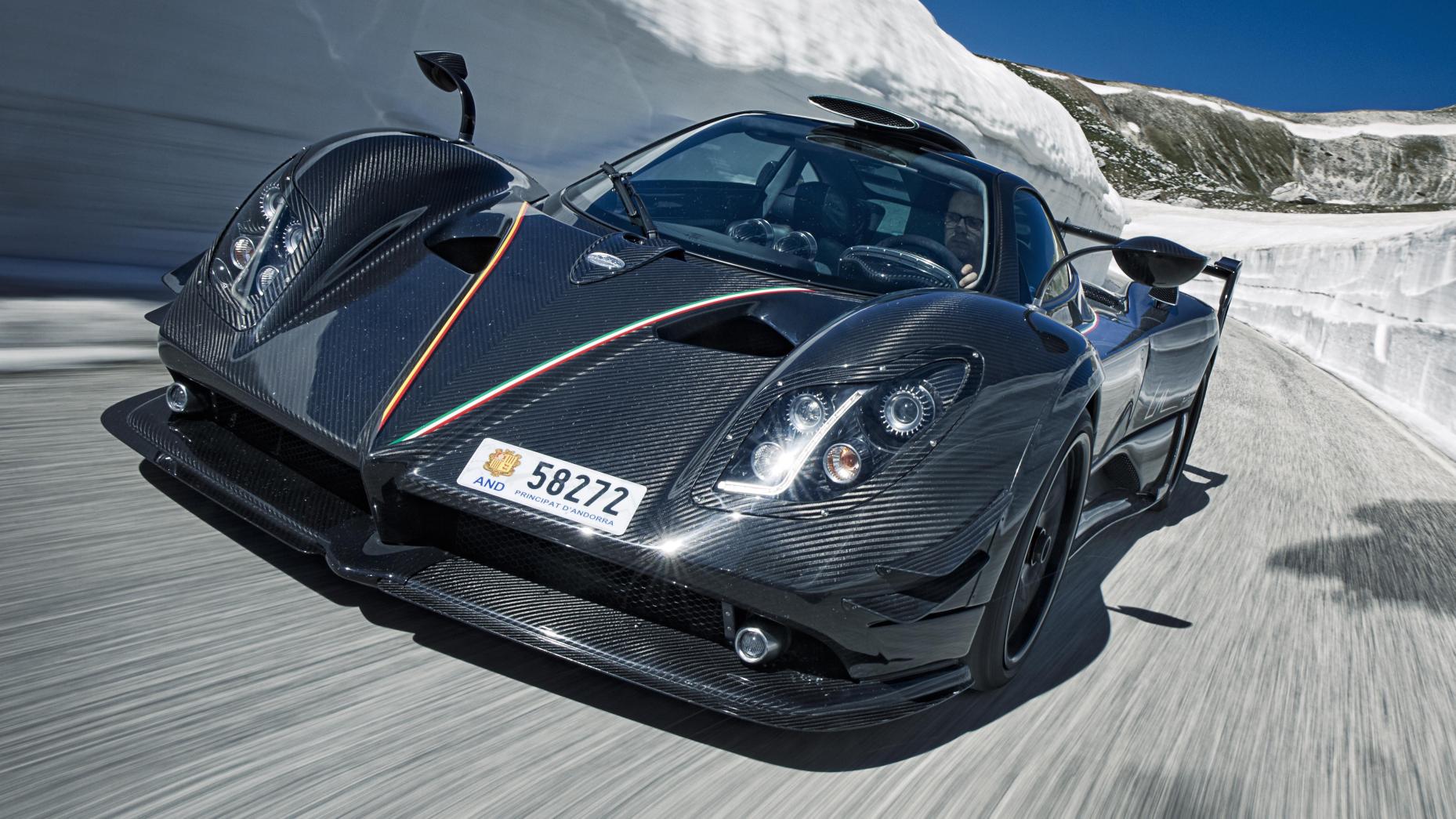
'Coachbuilding'. Doesn't sound right, does it? It has the whiff of stiff-shirted Victorian artisans polishing walnut until they can see the reflections of their handlebar moustaches.
Now try carrozzeria. In their pre- or post-WWII pomp, these guys weren't just panel beaters, they were alchemists. Princes, playboys and industrialists patronised them in much the same way as Vienna's archdukes and barons kept Beethoven afloat the previous century.

Right now, we're living through high times for high-end cars, and fashion has given Italy's carrozzerie a renewed lease of life. Both Touring Superleggera and Zagato debuted new, ultra-low-volume cars at Villa d'Este the other month.
Ferrari's SP division is reprising the company's roots in one-offs, indulging its wealthiest clientele with often surprisingly whimsical results. Rarity is the ultimate calling card, and nothing is rarer or more desirable than a one-off, especially if it's Italian. Or, best of all, a Pagani.

Horacio Pagani, of course, is actually Argentinian, and his wonderful little company isn't strictly speaking a carrozzeria at all (or that little - turnover was €56m last year).
Nor is it a conventional car company. Not since Enzo Ferrari has an individual followed their vision with such singular passion. Pagani's cars have more in common with Fabergé eggs, or Stradivarius violins, or maybe even an 18th-century symphony.
Pagani himself has a well-documented fascination with the Italian Renaissance, and named one of his sons Leonardo (Da Vinci-inspired rather than DiCaprio).

The story is almost a fairy tale. With the help of his fellow countryman Juan Manuel Fangio, Horacio got his foot in the Ferrari door, and was offered a position in the Formula One team by the great Mauro Forghieri. He declined, opting instead to join Lamborghini, starting as a third-level manual worker, back in 1983. This was the lowest rung on the ladder. He was a grafter.
An early evangelist for carbonfibre, Pagani lore has it that when Lamborghini suspended its special projects division during the early Nineties, Saddam Hussein-triggered, geopolitical meltdown, Horacio effectively fired himself so he could follow his muse. He bought his own autoclave. He began work on his own car. The C12 appeared five years later, in 1999.

Pagani will build you whatever you want, not because the company is riding the bespoke bandwagon for all it's worth, but because it helped resurrect the bandwagon in the first place, then gave it some carbonfibre clothes.
Now TopGear is barrelling through the night, out of Rome for a rendezvous with a Zonda that can lay claim to being the ultimate in a series of cars which long ago outgrew the adjective 'ultimate': the LM.
Owner and factory apart, only TopGear will ever be permitted to drive it. What we have here is maximum Zonda, a road-going echo of the Zonda R track machine, a step beyond even the Cinque - a 700hp-plus carbon-bodied exotica.

As you can imagine, this is not an opportunity to be taken lightly. The last time I drove a Zonda - an F, the day after a cultural exchange with Horacio in, er, a Lincolnshire curry house - I had what's known as a 'moment' right in front of the great man, exiting Club corner at Silverstone.
A low-speed moment, thankfully, and in honour of Gilles Villeneuve, who did exactly the same thing on his F1 debut for McLaren at that very track in 1977 (on every corner, in fact). That's what I told him, anyway. Just finding the limits, H.

Today we're in Gran Sasso, a vast tract of impossibly beautiful national park inland and not far from L'Aquila - still recovering from 2009's terrible earthquake - on Italy's eastern seaboard. There will be no limit-baiting up here.
Even Italians don't bother visiting all that often (although Mussolini 'fans', and depressingly for Italy there are still some, make the pilgrimage as he was incarcerated up here, in Campo Imperatore, before being rescued by the Nazis), spoilt for natural pulchritude as they are. It's their loss.
Not only does the road unfurl in a sinuous ribbon through serrated mountain peaks, it's virtually deserted. Better still, the full-lock hairpins at the lower end give way to long, fast, possibly even full-bore fifth-gear sweepers and straights.
The thought of fifth gear up here in the Zonda LM makes my throat constrict a little.

Many, many things bounce around your brain as you grapple with a Pagani for the first time. As befits Horacio's enlightened remit, this is as close as any car comes to being a piece of art or sculpture.
Just sitting in it seems enough to defile it, never mind driving the thing. It's possible that a Zonda is ensconced on the 22nd-floor penthouse of a Tokyo skyscraper alongside a grand piano and a Picasso. Inside and out, it's such a triumph of construction and design that this squandering of its real raison d'être isn't as offensive as it could be.

On the other hand, the Zonda is the perfect vehicle for anyone who reckons that the contemporary supercar isn't as scary as it should be.
The quality and uniqueness of the experience is what characterises truly memorable cars these days, which is why a Rolls-Royce Phantom or Bentley Mulsanne Speed is worth the price of entry.
But in a world where a Honda Civic has 300hp, fast cars need to pull something extra special out of the bag.

The Zonda delivers fear and demands respect. Alongside the knurled aluminium switches and the steampunk influence, the atmosphere inside is loaded with the unusual and distinctive emotion that only comes when you're driving someone else's one-off masterpiece up an Italian mountain. A mountain that still has fingers of ice and snow clinging to the uppermost part of the road.
And do you know what, this really is a scary car. It has that wonderful fighter jet cockpit feel, and the LM's nose features tumescent new front wings that give it a son-of-LMP1/Group C racer throwback look, enabling you to place it on the road accurately. It has electrifying turn-in, which helps too.
But it gets Kim Kardashian-wide at the hips and beyond, over-your-shoulder visibility is negligible, and it's oh-so-very fast. It doesn't like to trundle or tootle, and the non-airbagged wheel wriggles constantly in your hands. It makes a Bugatti Veyron feel like a Polo BlueMotion.

It's a very special place in which to sit and be slightly scared, though. Engineering is one thing, but you've got to love a car created by a man who clearly knows his Michelangelo from his Michael Schumacher.
For something designed to plonk you directly onto the expressway to visceral fun, the Zonda is impressively pretentious. I've never used my iPhone's camera to take pictures of a throttle pedal before, and the indicator stalks are like RKO-era Flash Gordon rocketships. Yes, Horacio has definitely watched Fritz Lang's Metropolis. And it's all peerlessly executed.

Well, almost all. Oddly enough, a not-unimportant piece of switchgear fails as I'm still getting to grips with the car. It's the ASR traction-control button (a parts-bin Mercedes item, ironically), which disappears into the area beneath the gear selector the second time I press it (not that hard, honest).
I rummage about, but don't want to get my finger wedged in the aperture. Two issues immediately present themselves: I've broken the car and, more worryingly, I now don't know whether the traction control is on or off (there's no light in the main display).
There's only one way to find out. Peeling into a tight, uphill right-hander, I give that funky throttle pedal a prod. There's a 7.3-litre AMG V12 right behind my head, similar in configuration and level of tweakage to the Zonda Cinque.

Do you know the physics behind the low polar moment of inertia, the principle that explains why mid-engined cars snap suddenly once grip has expired? I do, and the LM is a hell of a place to get reacquainted. I seem to spend so long staring swivel-eyed out of the side window I can identify the strata in the rock face.
The LM's owner lives on the other side of the world, but the car is registered in Andorra. I'd like us to remain friends. When I ask Pagani's fantastic (and fantastically named) Luca Venturi what sort of business the owner is in, he smiles and says: 'Lots of businesses.' Apparently he worked with Horacio for two years on this car, and the result - as the badge on the engine bay says - is 'one of one'.

It's also deliberately bipolar. An Italian tricolore runs the length of the driver's side, with the German national colours on the other (the owner has German roots). They meet at the prow of the Zonda's bonnet, and even appear on the brake calipers and in the headrests. The highly personal nature of Pagani's products puts this beyond objective debate. Um'
There's no doubting the rest of it, though. The reworked nose also contains a new headlight design. If you can get past that, the exposed carbonfibre remains a stunning Pagani USP, but even that is outpointed by the LM's roof-mounted air intake and fin and rear-wing party trick.
The Cinque summons 750kg of downforce at 300km/h - the McLaren P1 GTR has a weedy 660kg at 240km/h - so Lord knows what the LM is generating. Gran Sasso is not the place to verify it, but this could well be the most outrageous-looking and aero-effective road car of all time.

Supplies of AMG's 7.3-litre engine are dwindling, and although the LM's has never been on a dyno, Pagani reckons its power output is now well north of 700hp. Consider this car a testimonial.
Its red line has been raised to 7,500rpm, and the exhaust system features an Inconel ceramic-coated manifold and titanium muffler. It's blue and extremely expensive-looking. It, too, would win plaudits from idiots in polo necks if it were mounted on Charles Saatchi's wall, Gatling-gun exit set-up and all.

The LM explodes into life with the expected ferocity, but settles into a cultured idle, which is unexpected. On the sweeping super strada towards our location, the inner child is suppressed long enough to appreciate an amazingly supple ride, courtesy of a suspension set-up whose magnesium uprights, titanium springs and Öhlins dampers mimic the same competition cars the LM's styling draws from.
As the LM's core is made of Pagani's patented carbon-titanium über-material, its sense of structural integrity, the immediacy of its movements and its body control will be unlike anything you know unless you're a top-flight racing driver. No wonder Lewis Hamilton keeps one in Monaco.

Probably a proper manual, though. The LM uses a 6spd robotised sequential 'box made by Cima, and it's kinda old-school. Which is to say, it's a good job I quite like the challenge of mastering upshifts without smashing my head into the Italian flag that's stitched into the headrest.
There are three modes - Comfort, Sport or Race - all of which demonstrate how rapidly flappy paddles have come on in the past decade. The paddles themselves are lovely, and although fixed to the steering column still easy to use, even on full lock. But the new hypercar kings - Ferrari, McLaren, Porsche - are now playing this bit of the game on fast-forward.

The other big challenge comes from simply holding on when you open the taps. The road to the top of Gran Sasso unspools into a spectacular ' and welcome ' straight, giving you some idea of this crazy landscape. It even looks lunar.
The Zonda beams its way across the plain, part-Batmobile, part-spaceship, and I can see it shed tiny nuggets of rubber from those vast 335/30 Pirellis on what is a pretty abrasive surface. If it started to hover above the surface or take off altogether, it wouldn't be that surprising.

In first or second gear, the chassis electronics struggle to cope (I've sussed the ASR), but beyond that, it's one of those experiences that takes all the stuff you thought you knew about 'fast' and rearranges it.
Never mind trees and hedges blurring past, the Zonda LM can make entire mountains disappear. Brake hard, and they all rush back into view again. It's surreal and unreal. It's emotional.
It's also truly personal. That, I believe, is the essence of Pagani's success. The engineering and execution are of the highest possible standard, but they also channel the spirit of a simpler era when young and old men fashioned a piece of aluminium into something transcendent.
Money can buy most things, but this sort of experience is priceless. These days, the wealthy are pouring cash into tangible assets, like art or cars. Pagani has figured out how to combine them.
STORY Jason Barlow
PHOTOS John Wycherley






